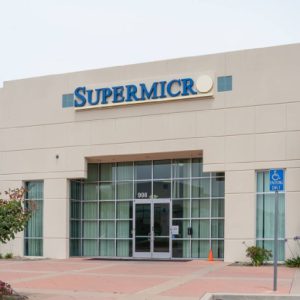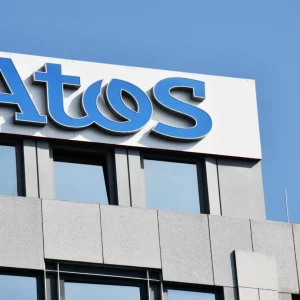
Price, speed, and quality: choose any two.
Seasoned technology leaders are familiar with this age-old constraint – that regardless of how innovatively a digital transformation programme may begin, ultimately investment capacity available dictates the quality of the final deliverables.
As traditional in-house shops have raced to support business continuity plans, leaders are grappling with an urgent need to modernise the engine room whilst battling cutbacks and the choice above is, once again, a live question.
And as Jim O’Grady, VP, IT asset management of HPE Financial Services notes crisply: “With the majority of IT budget consumed to keep the business running, funding for transformation is often insufficient.”
HPE is among the vendors getting creative with new technology financing options as a result, with Dell and Hitachi Vantara also among those bringing forward new products, many with a distinctly cloud-like heritage. Their focuses vary, but a common thread is increasingly creative ways to help IT leaders lower asset costs by eliminating the cost of reserve capacity, which causes low utilisation rates.
Emerging IT funding options aim to enable modernisation whilst balancing the cost of change
One example: in April 2020, HV debuted EverFlex, a cloud-like financing model.
Provided in both utility and as-a-service offerings, it is positioned to address scenarios where peak capacity and resourcing requirements are both predictable (but where fresh utility additions on a pay-per-use utility pricing basis could help optimise further) or environments which, despite being well managed, capacity volatility is pronounced.
The elastic acquisition choices span the entire Hitachi Vantara Portfolio.
The Dell Technologies on Demand (DTOD) portfolio also aims to help firms consume infrastructure in a cloud-like way. DTOD provides three distinct options: Data-Centre-as-a-Service, PC-as-a-Service, and Technology Rotation Payment Solutions.
Its PC-as-a-Service offering bundles per user per month financing with traditional hardware, software, and lifecycle services, which may well optimise break-fix management. The Data-Centre-as-a-Service solution meanwhile brokers infrastructure consumption across on-premise, co-location, and edge technology engines; with improved latency the key benefit, it could become a critical facilitator for firms’ journeys from fully in-house into the cloud.
Dell also offers a mix of buy-back, lease extension and upgrade options, providing a way for enterprises to access the latest technologies in the most optimal way and claims it provides a route to hybrid cloud that starts at $70 per node per day. Like most of these offerings, at its heart it is designed to allow for businesses to account for technology expenditures using an OpEx model and “properly align their technology expense with the business value they receive from the technology.”
Figure 1 – New financing options offer a mix of fixed and flexible costs

The DTOD portfolio has a similar financial profile to EverFlex: firms can lease buffer capacity to handle peak loads, whilst also committing to fixed base load costs (see figure 1).
“Hewlett Packard Enterprise (HPE) meanwhile is well along the path to offer its entire portfolio as-a-Service with HPE GreenLake. Whether an organisation opts for technology as-a-service, or traditional financing, or even cash acquisition, HPE’s Financial Services solutions create investment capacity. They combine financing and asset management expertise/capabilities including:
- HPE Assets Upcycling
- HPE Accelerated Migration
- HPE Certified Preowned
- HPE Adaptable Use Models
“HPE offers innovative ways to create investment capacity,” stated O’Grady. “Not only with traditional financing, but also …using tech customers already have.”
Both its Assets Upcycling and Certified Preowned programs aim to extend the useful life of IT assets, In the former, firms trade-in old kit towards the cost of technology modernisation and gain access to the same for contract savings in the latter.
Accelerated Migration provides for firms to recoup sunk capital expenditure by transferring from an ownership model to a consumption model.
According to the firm, its Adaptable Use Models enable customers to obtain up to 12 months of IT in advance, flex-down resourcing, or, crucially return acquisitions at pre-determined milestones.
O’Grady suggests that the Assets Upcycling and Accelerated Migration programs have together “infused $1.3bn to customer budgets over the past four years” and points to the environmental benefits of the programme as well; it’s not just about ROI.
HPE Financial Services owns and operates 400,000 square feet [of] Technology Renewal Centres on the US East Coast [and] in Scotland,” according to O’Grady. “Close to 4 million units of the technology taken in [during] 2019 – more than 99% – [was] reused in some way.”
HPE is also responding directly to the economic crisis brought on by Covid-19: its Pandemic Relief Program allows for customers to defer the cost of IT modernisation into 2021. Other such IT funding options are emerging in many quarters too.
Assess elastic financing options with a modern value model
Cost deferrals like these are attractive, yet the absence of arguably truly scale-down expenditure management (do you disagree? Let us know why at shane.hill@techmonitor.ai) across the industry – say, to cut outlay by half if operational requirements are slashed due to lockdowns – may cause more cautious enterprises to remain circumspect.
These new IT funding options do, however, offer technology leaders the opportunity to create investment capacity for programme improvements whilst going some way to mitigating the economic risk.
Leaders are thereby left with a choice: invest to renew the core or do nothing and risk lost opportunities – beyond traditional measures like reliability, efficiency, and scalability. So, firms should assess whether these new models are fit-for-transformation, across:
- growth-to-support ratio
- desired OPEX / CAPEX mix
- actual and target business agility
- commercial impact.
The attraction of these new investment models is simple and arguably compelling, however: to maximise funding for growth by optimising business-as-usual (BAU), and there are some simple steps firms can take.
First, firms should baseline current service desk utilisation across growth and support activities and set relevant targets that can be achieved through these funding models.
Second, programme leads should decide how these new funding models can enable cloud-shift. By easing the IT organisation’s capital liabilities, operational expenditure can be freed to pursue an expansion of the firm’s digital operations for target products and markets.
Third, set targets for reducing journey friction across critical business workflows.
As these investments may well enable greater business agility, firms should decide how to drive for results in response to market conditions, and therefore the priority efficiencies to target across the legacy IT stack.
“Business requirements … should determine where workloads reside to drive outcomes,” said Dell financial services VP of sales (EMEA) Dave Roberts. “Some workloads are best kept on premise to reduce latency … our solutions mean that customers can focus on driving business value.”
Ultimately, a successful IT transformation programme is measured in commercial impact: change in wallet and mind share – firms should consider the comparative value of a flexible investment model against a traditional ownership structure.
Invest now to capture growth
Many large enterprises are, of course, still assessing risk appetite for tier 1 application migrations. But firms that pursue funding models like those put forth by HV, HPE and Dell – particularly those based on the outcome-based performance metrics in the EverFlex as-a-service model – may well perceive that the risk of transformation is outweighed by the do-nothing cost.
“EverFlex enables … customers to go beyond simply reducing asset costs by leveraging managed services to reduce operational costs as well,” according to its datasheet. “EverFlex Consumption pricing models … help lower costs by up to 20%.”
These funding models are emerging as IT leaders pursue cost corrections with vendors. So, whilst committed baseline infrastructure provisions can keep BAU systems running, scaling up resources can support engineering and operations teams as they pursue cloud-native process, data flow, and resiliency improvements.
Advantages of container-based architectures, full microservices, or streamlined miniservices include increased portability, performance, and scalability, respectively.
“By providing outcome-based operational services [EverFlex] helps deliver more consistent service levels without placing additional burden on staff,” according to a press release from HV issued in April 2020.
Also, while the flexibility in spend on buffer capacity is attractive, the diminishing buyer demand caused by crisis-driven cutbacks mean that IT leaders have an opportunity to write more favourable scale-down clauses into cloud and cloud-like contracts.
“Some public cloud providers are known … [to] charge a lot for [cloud] egress,” according to chief technology officer of Datera, Hal Woods, in February 2019.
Partner at law firm Corrs Chambers Westgarth, Arvind Dixit agreed: “Aspects of the traditional outsourcing model have been proven to be flawed: organisations now have an opportunity to … protect against similar occurrences.” Cloud computing contract models are generally perceived as less mature than agreements in other business areas.
Tearing-down cloud instances should deliver cost reductions below fixed commitments.
Agreed scale-down facilities below buffer capacity will provide certainty for IT leaders to spin-up pre-production environments to re-engineer business functionality; decoupling from the monolith based on modern architectures, to then spin-down and claw back OPEX.
In the race to cloud-like operations, traditional office-based firms are realising major synergies from remote operations; instead of hours-long journeys to telecommute from the office, previously workspace-anchored workforces have grasped the benefits of cloud-shift.
Vendors like HV, HPE and Dell have all grasped the opportunity to wind-down their on-premise footprint, to the advantage of IT leaders.
Data: To migrate, or not to migrate?
Of course, part of the reason that firms have been perfectly happy maintaining a local presence may well come down to complex web of legacy integrations – from the data layer all the way up to the application.
According to CTO of Sungard Availability Services Abay Radhakrishnan in February 2019: “Applications that integrate with the database and are tuned with [a] particular runtime or server for specific database versions are better left on-premises.”
The issue of decoupling the data from company systems is a too-often hidden cost of cloud.
Although retaining data on-premise whilst migrating applications to the cloud is a strategy many firms pursue to comply with data regulations, “creating a reliable, low latency data … connection” is one of the core challenges firms face, according to Microsoft.
Further, regulatory risks may outweigh the cost benefits of fully moving into the cloud.
“Data being sent around networks is often subject to legislation covering privacy, residency, sovereignty and restrictive classification,” according to Gartner Research vice-president Tiny Haynes. “Therefore, IT leaders need to be mindful of [whether] … service provider[s] … support interoperability … in these areas.”
So, these new investment models from HV, HPE and Dell offer IT leaders a cautious, alternative step on the journey towards cloud.
How does the above play into your experience? We’d love to hear from you. Reach Tech Monitor research director Shane Hill by email here with your thoughts.






